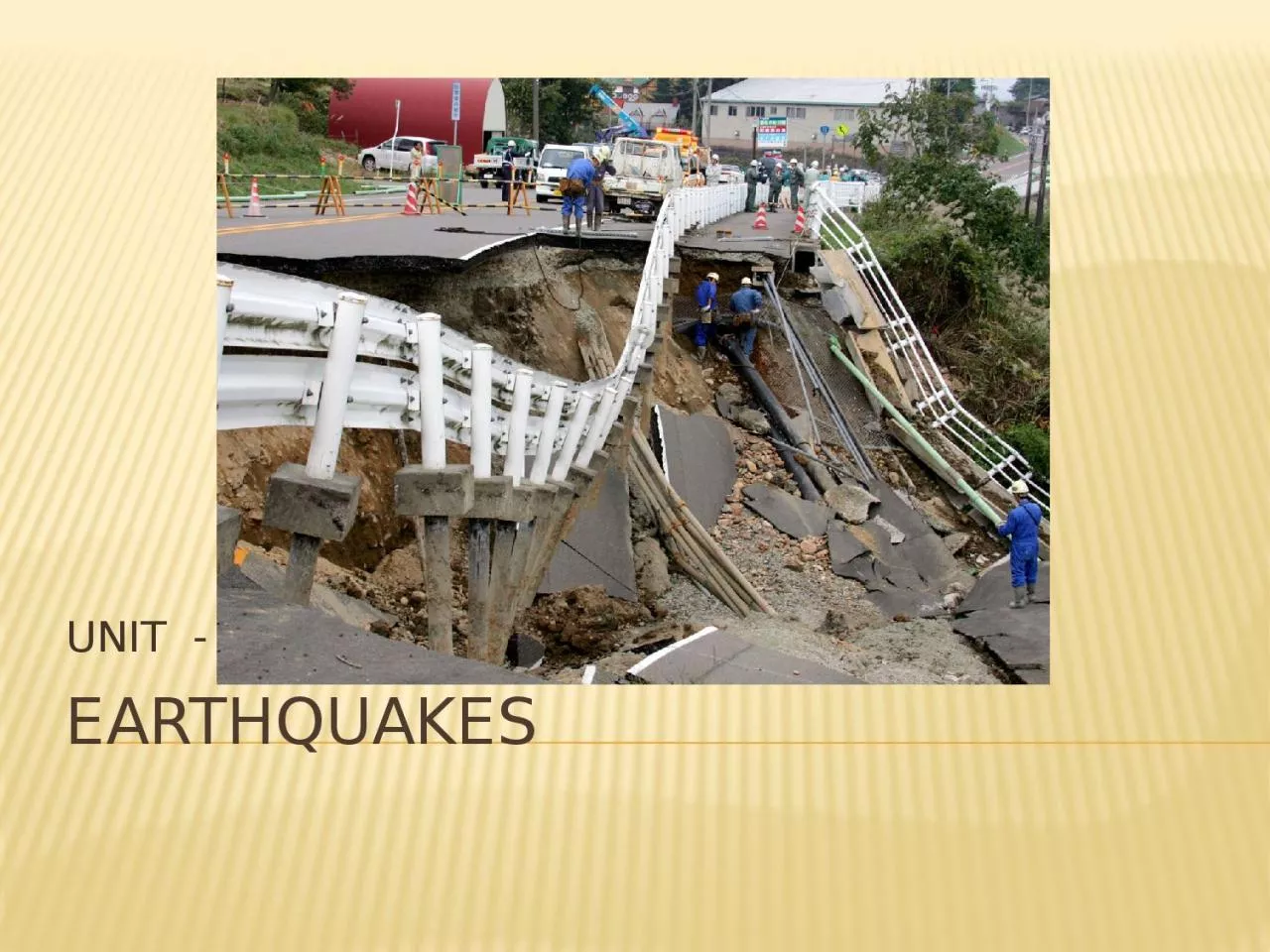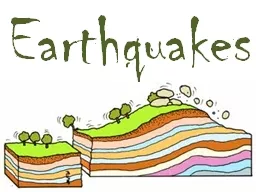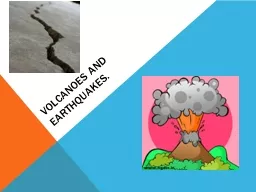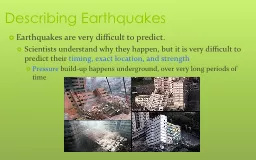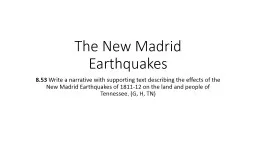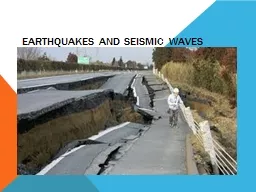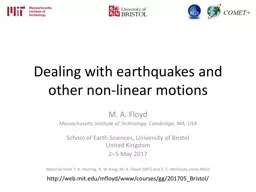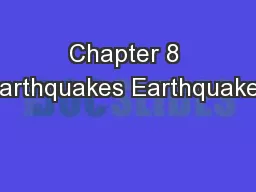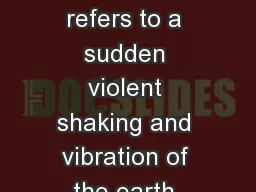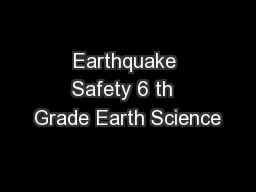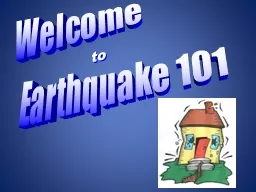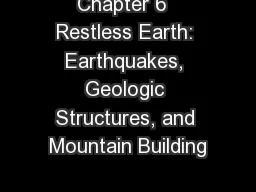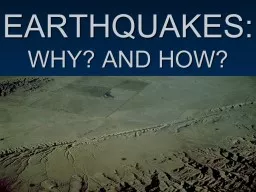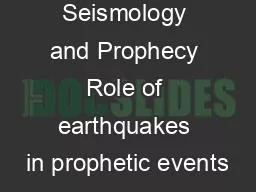PPT-EARTHQUAKES UNIT - 7 What is an Earthquake
Author : gagnon | Published Date : 2023-10-04
An earthquake is a sudden motion or trembling of the Earth caused by the abrupt release of energy that is stored in rocks Modern geologists know that most earthquakes
Presentation Embed Code
Download Presentation
Download Presentation The PPT/PDF document "EARTHQUAKES UNIT - 7 What is an Earthqu..." is the property of its rightful owner. Permission is granted to download and print the materials on this website for personal, non-commercial use only, and to display it on your personal computer provided you do not modify the materials and that you retain all copyright notices contained in the materials. By downloading content from our website, you accept the terms of this agreement.
EARTHQUAKES UNIT - 7 What is an Earthquake: Transcript
Download Rules Of Document
"EARTHQUAKES UNIT - 7 What is an Earthquake"The content belongs to its owner. You may download and print it for personal use, without modification, and keep all copyright notices. By downloading, you agree to these terms.
Related Documents

